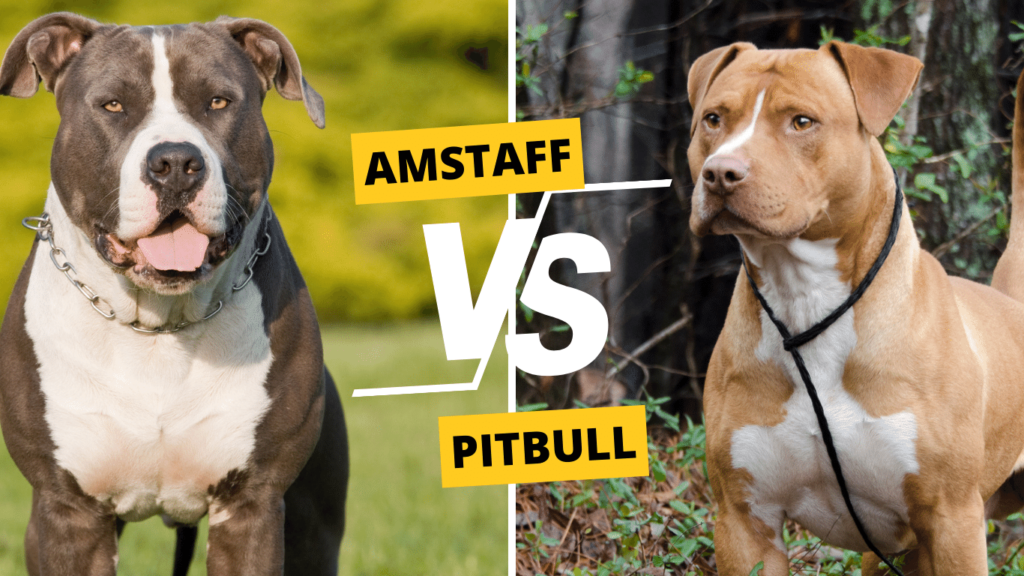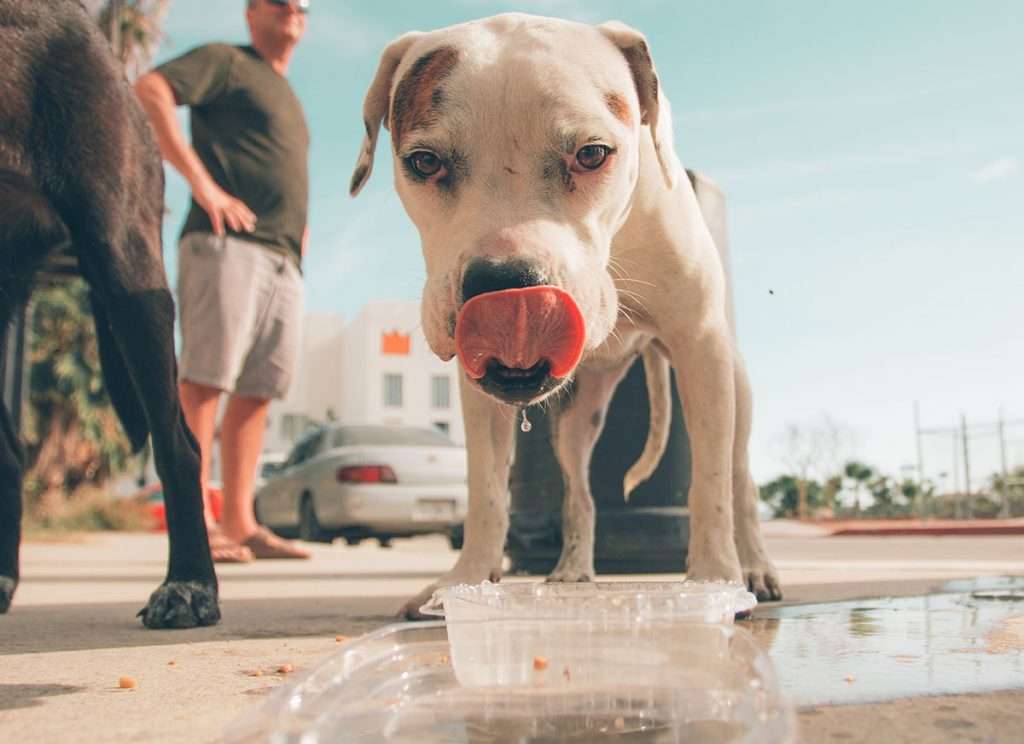
Reasons why your Dog Is Not Drinking Water and how you can help
-
 By
Victoria Bennett
By
Victoria Bennett
- Last updated: November 6, 2023

It’s especially hot outside today, and your dog is playing fetch in the backyard. You notice that he’s been running around for a while and decide to check on him.
When you get closer, you see that he’s panting heavily, and his tongue is hanging out. You realize he must be thirsty, so you head back inside to get him some water. But when you return with his bowl, he sniffs it and then walks away.
What could be wrong? One of the most common challenges people have with their dogs is getting them to drink enough water. Dogs can become dehydrated very easily, which can lead to various health problems. We understand how frustrating it can be when your dog won’t drink water, so we’ve compiled a list of possible reasons why this might be happening.
Table of Contents
Hydration And Its Importance To Dogs
Dogs need to drink plenty of water every day to stay hydrated. Just like humans, they can become dehydrated from sweating, vomiting, diarrhea, and other causes.
Dehydration can lead to serious health problems such as heat stroke, kidney disease, and even sometimes – death. This is why it’s so important to make sure your dog is drinking enough water each day. But how much water does your dog need? The answer depends on various factors such as his size, activity level, and health condition.
For example, a small dog who is relatively inactive will need less water than a large dog who is very active. As a general rule of thumb, a medium breed dog needs about 1 oz of water per pound of body weight each day.
So, if your dog weighs 40 pounds, he should be drinking at least 40 oz of water each day. Of course, this is just a guideline – some dogs may need more or less depending on their individual circumstances such as health condition, activity level, area temperature, humidity, etc.

Signs Your Dog Is Dehydrated
One of the best ways to tell if your dog is dehydrated is by checking their gums. They should be moist and pink in color. If they’re dry or tacky to the touch, this is a sign that he’s dehydrated. You can also check his skin for elasticity.
To do this, gently pinch the skin on the back of their neck. If the skin takes a long time to return to its normal position, this is another sign of dehydration. Other signs that your dog may be dehydrated include excessive panting, lethargy, dry nose or eyes, and decreased appetite. If you notice any of these signs, it’s crucial to take action right away.
reasons your dog may not be drinking water
Nothing is more frustrating than seeing your dog suffer and not knowing why. If your dog is dehydrated, it’s important to find out the cause so you can treat it accordingly. Here are some possible reasons why your dog might not be drinking water:
Stress or Anxiety
Just like humans, dogs can experience stress and anxiety. This can be caused by a variety of things such as a move to a new home, the addition of a new family member, or even loud noises. Stress and anxiety can lead to a decrease in appetite and thirst, so your dog may not be drinking water because he’s not feeling well.
If you think your dog’s dehydration may be caused by stress or anxiety, there are several things you can do to help them feel better. First, try to create a calm environment for him. This may mean playing soft music or using an aromatherapy diffuser with calming essential oils such as lavender or chamomile. Ensure they have a safe space to retreat to, such as a crate or bed, where they can feel secure.
You should also try to avoid stressful situations as much as possible. If there are loud noises outside, bring your dog inside and close the windows. If you’re having a party, put him in another room where he can’t see or hear the commotion. Exercise is also a common way to reduce stress and anxiety in dogs.
A healthy dog is a happy dog, so make sure he’s getting plenty of exercise each day. If your dog isn’t used to exercising, start off slowly with short walks or play sessions and gradually increase the length and intensity over time.

Dental Problems
Another possible reason why your dog isn’t drinking water is that he’s in pain. Dental problems such as gum disease, tooth decay, and mouth ulcers can make it very painful for your dog to drink. If you think this may be the case, take a look at his teeth and gums.
If you notice any redness, swelling, or discharge, this is a sign that he’s in pain and needs to see the vet right away. Your vet will be able to diagnose the problem and prescribe the appropriate treatment.
In some cases, dental problems can be resolved with at-home care, such as brushing your dog’s teeth regularly and using a dog-safe toothpaste. You should also try to feed your dog wet food instead of dry kibble, as this can help reduce plaque build-up. If you believe there is a more serious issue then its always a good idea to consult your online or local vet.

Inaccessible Water Bowl
If your dog finds it difficult to reach his water bowl, he may not be drinking enough water throughout the day. This is especially common in senior dogs who may have arthritis or other mobility problems.
If this is the case, try moving their water bowl to a lower level so he can easily reach it. Additionally, try using a bowl with a wider opening, so he doesn’t have to put his mouth in as far. You can also add an automatic water dispenser to his enclosure, so he always has fresh, clean water available.

Dirty Water Bowl
If your dog’s water bowl is dirty, he’s not going to want to drink from it. Dogs can be very clean animals, and they prefer their water to be clean as well. Make sure you’re cleaning his water bowl daily with hot soapy water.
You should also be using a different brush for his water bowl than the one you use for his food bowl. This will help prevent the spread of bacteria and keep his water clean. Bacteria and parasites can also contaminate your dog’s water bowl, so it’s important to clean it often.
If you live in an area with a lot of insects, consider using a bowl cover to keep them out. If you have more than one dog, each dog should have his own water bowl. This will help reduce the risk of infection and ensure each dog is getting enough to drink.
Alternatively, you may also want to try using a water fountain for your dog. These are becoming increasingly popular as they help keep the water clean and fresh.
How To Get Your Dog To Drink Water
Your top priority should be to get your dog to drink water as soon as possible. Dehydration can lead to serious health problems, so it’s important to take action right away. Here are some tips on how to get your dog to drink water:
Clean the Water Bowl
As mentioned earlier, dirty water bowls often lead to dogs not drinking enough water. Fill it with fresh, cold water, and put it in a place where your dog can easily get to it.
Add Some Ice Cubes
If your dog isn’t a big fan of drinking water, try adding a few ice cubes to the water bowl. This will make it more enticing for your dog to drink.
Give Your Dog Flavored Water
Although unconventional, you can actually give your dog flavored water to get him or her to drink more. Try adding a little bit of chicken broth or beef broth to the water bowl. Slowly reduce the amount of flavoring over time until your dog is drinking plain water again.
Take Your Dog for a Walk
Exercise is important for dogs, but it can also help them stay hydrated. Take your dog on a walk around the neighborhood or to the park. This will give him or her a chance to drink some water while getting some exercise.
Add Some Wet Food
If your dog is mainly eating dry food, try adding some wet food to his or her diet. This will add more moisture and make it easier for your dog to stay hydrated.
Give Your Dog Water From a Bottle
If your dog still isn’t drinking enough water, try giving him or her water from a bottle. This is often more effective than using a bowl. You can also put the water in a syringe and give it to your dog that way.
Consult Your Vet
If you’ve exhausted all of the other options, it’s time to consult your online or local vet. He or she may be dehydrated and need IV fluids. The vet will also be able to determine if there is another underlying health problem that is stopping your dog from drinking water.
Potential Health Risks If your Dog Doesn’t Drink Enough Water
Aside from dehydration, there are other health risks associated with not drinking enough water. These include:
Urinary Tract Infection
If your dog isn’t drinking enough water, he’s at a higher risk of developing a urinary tract infection. This is because the urine becomes more concentrated and can actually form crystals. These crystals can then lead to an infection and painful urination.
Kidney Disease
Chronic kidney disease is another health risk associated with dehydration. When the kidneys don’t have enough fluid, they can’t filter out the toxins properly. This can lead to a build-up of toxins in the body and eventually kidney failure. Once the kidney has stopped functioning, it’s very difficult to reverse the damage.
Heatstroke
Dogs can also suffer from heatstroke if they don’t have enough water in their system. This is because the body needs water to regulate its temperature. When the body gets too hot, it can start to shut down. If your dog has a fever or is panting excessively, he may be suffering from heatstroke.
Bladder Stones
The way water works inside the dog’s body is it actually helps to dissolve minerals. If there’s not enough water, these minerals can then form stones in the bladder. These stones are excruciating and can cause blockages.
Digestive Problems
When there isn’t enough water in the body, it can lead to constipation and other digestive problems. This is because the intestines need water to help move food through the system.
Liver Disease
The liver is responsible for breaking down toxins in the body. If it doesn’t have enough water, it can’t function properly, and the toxins will build up. This can then lead to liver disease.

Final Thoughts
Commonly, drinking water for dogs is often an afterthought. However, it’s actually one of the most important things you can do to keep your dog healthy.
Ensure your dog has plenty of fresh and clean water available at all times, and watch for signs of dehydration. Additionally, keep their water bowls clean and monitor their dental health.
If you have any concerns, always consult with your veterinarian. They will be able to help you determine if there’s an underlying health condition causing your dog not to drink water and create a treatment plan accordingly.
Frequently Asked Questions (FAQ)
When should I worry about my dog not drinking water?
You should worry about your dog not drinking water if it persists for more than 24 hours, as it may indicate underlying health issues. Contact a vet for guidance.
How do you hydrate a dog that won't drink?
Hydrating a dog that won’t drink can be challenging, but here are some steps to try:
Offer ice cubes: Some dogs may prefer chewing on ice cubes, which can provide hydration.
Wet their food: Mix water or low-sodium broth with their food to increase moisture intake.
Use a syringe or dropper: Administer small amounts of water or an oral rehydration solution directly into their mouth. Be gentle.
Try electrolyte solutions: These can help replace lost fluids and electrolytes; consult your vet for recommendations.
Encourage drinking: Use a clean, fresh bowl, and try different water sources or temperatures. Some dogs prefer running water from a fountain.
Monitor for dehydration signs: Keep an eye on symptoms like lethargy, dry gums, or sunken eyes. If they worsen, seek veterinary care.
Why is my dog not drinking water but still peeing?
If your dog is not drinking water but is still urinating, it could be due to several reasons:
Underlying health issues: Some medical conditions like kidney disease, urinary tract infections, diabetes, or gastrointestinal problems can cause increased urination despite a decreased water intake.
Stress or anxiety: Changes in a dog’s environment or routine can lead to stress, which may affect their drinking habits.
Food moisture content: If your dog is eating wet food or food with high moisture content, they might not need as much water.
Climate and temperature: Dogs may drink less in cooler weather or when they are not active, even though they still need to urinate.
Medications: Some medications can affect a dog’s thirst and urine output.

Victoria Bennett
About Us
Latest From Our Blog



















